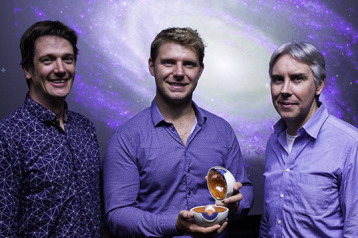Reaching for the stars
Scientists at the Centre for Eye Research Australia (CERA) are teaming up with Swinburne Institute of Technolohy astrophysicists to better understand the mathematics behind diagnosing eye diseases.
The team, led by ophthalmologist Dr Peter van Wijngaarden from CERA and Associate Professor Christopher Fluke from Swinburne’s Centre for Astrophysics and Supercomputing, will work together to apply the same big data analysis used by astronomers in their study of the universe, to the field of ophthalmology.
CERA researchers want to use these principles to improve their understanding of the data generated with a new type of spectral imaging camera, which provides unique insights into diseases of the eye and brain including Alzheimer’s disease.
“We hope to learn from the Swinburne team how to ‘crunch the numbers’ more effectively, so we can generate clinically-relevant information to allow faster and earlier diagnosis of ageing eye diseases in the future,” says Dr Xavier Hadoux, postdoctoral research fellow at CERA. “Astronomy is a great training ground for tackling big data challenges,” says Swinburne astronomer Dr Edward Taylor, who is also involved in the project. “The hyperspectral camera works on a very similar principle to instruments that astronomers use to study how distant galaxies work. We are excited by the opportunities to work with CERA on transferring our approaches to a new discipline, and we expect to learn new ways of studying our data in return.”


























